#ww2 german aircraft
Text

Beautiful shot of a Deutsche Lufthansa Heinkel He 111C-0 (D-AQYF) Leipzig, 1936/37(?), location unknown. See my German aviation page on Facebook - Eagles of the Reich
72 notes
·
View notes
Text

German BV 138 flying boat rendezvous with a Kriegsmarine submarine, 1943.
➤➤ UNUSUAL SEAPLANES VIDEO: https://youtu.be/ThFL8GsIKd8
#youtube#aircraft#airplane#aviation#dronescapes#military#ww2#documentary#wwii#aviation history#bv138#seaplane#second world war#subm#german submarine#u boat#uboot
313 notes
·
View notes
Text

German Focke-Wulf FW200 Condor at Immola Airfield, Finland - 4 June 1942
#Vintage aviation#WW2#Luftwaffe#German aircraft#Patrol aircraft#Focke-Wulf#FW200#Condor#Military aircraft#Reconnaissance aircraft#Bomber
114 notes
·
View notes
Text

#ww2 history#wwii#wwii era#wwii history#wwiii#wwii germany#British#British wwii#Brits wwii#raf#Germans#Germany#uk#alliés#world war two#world war 2#wwii aircraft
9 notes
·
View notes
Text

Looking for a war/history server? You’re in luck!
In my server you’re free to talk to others about military, wars and history in general!
Here’s some of the topics:
- Art
-Gaming
-Music
-WW1
-WW2
-The Cold War
-Army, Marines, Airforce ect..
And so on
An easy way to find people with similar interests, and an easy way to make friends!
All ages, races, genders and interests welcome!
#air force#military#army#us marines#ww2 history#fighter aircraft#fighter jet#german tanks#ww2 aircraft#discord stuff#discord server#cold war#art server
10 notes
·
View notes
Text

British soldier posing with a downed Nazi aircraft.
#vintage photography#wwii#ww2 history#ww2#german aircraft#nazi aircraft#luftwaffe#ww2 aircraft#british soldiers
3 notes
·
View notes
Text
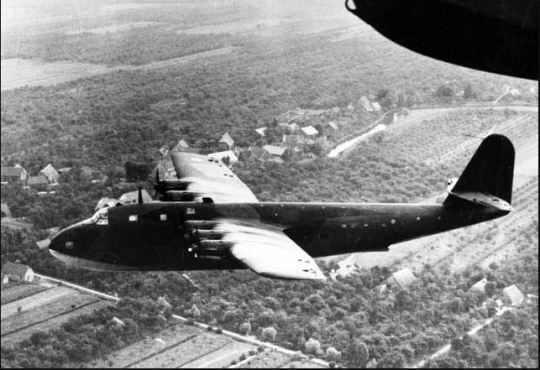
Blohm & Voss BV 222 Wiking – The German Sky Ship
The ‘Blohm & Voss BV 222 Wiking’ was a German Sky Ship that took part in the Second World War. The vessel was named after the Norse god of war and the sea. It was constructed at the Blohm & Voss shipyard in Hamburg, Germany, in 1939.
The ship was used for reconnaissance missions and attacks on enemy positions. It sank several vessels during the war including the British battleship HMS Royal Oak and two cruisers. After the war, it was scuttled by its crew off the coast of Denmark to prevent it being captured by Soviet forces. Visit the PlaneHistoria website for more information.
#enormous#bv 238#bv 222#flying boat#German#large#seaplane#transport#ww2#world war 2#aircrafts#world war
22 notes
·
View notes
Text

"Der Heiligenschein des Ergebenen"
An older piece I dug up and decided to upload here as well. It's a more story-heavy piece as it depicts a scene from a story I've been working on and off for several years now.
War and it's people fascinated and frightened me since I was little. My family came from all sorts of places, including Germany and Poland, making the era of WW2 so much more personal for myself and them.
This scene depicts Jonas, my WW2 pilot character, who decided to flee from Germany at the later period of the ongoing war. He crashlanded in England and was captured, turning himself in essentially, to free himself from the grasp that tortured the country for so long.
Working with such heavy topics is another way to work through your families and countries history, exploring what happened and understanding the people from times long ago to a certain extend.
#artwork#digital art#drawing#painting#illustration#own character#Jonas/Blake#human#pilot#aircraft#kunst#kunstwerk#zeichnung#zeichnen#digital painting#digital illustration#luftwaffe#german army#ww2#historic
11 notes
·
View notes
Link
Check out this awesome 'Junkers Ju-25' design on @TeePublic!
0 notes
Text
Let them fight

Late sketch for VE day. Some nice Il-2 vs Tig II action. Bois are Sergei and Matthias respectively. I may clean it up, but for now, here ya go.
#blazing skies#bs#history#living machines#wwii#furry#aerosaurs#alt history#terrasaurs#i totally forgot#ve day#victory in europe day#ww2#tank#aircraft#german#russian#soviet#wwii germany#nono germany#i'm sorry#zeke's art#zeke's sketches#il-2#tiger ii#king tiger#battle of berlin
1 note
·
View note
Text
Tailspin Tapestries: The Colorful Faces of WWII Aircraft 🃏
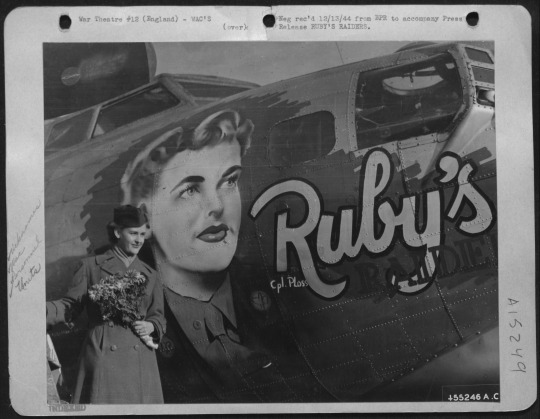


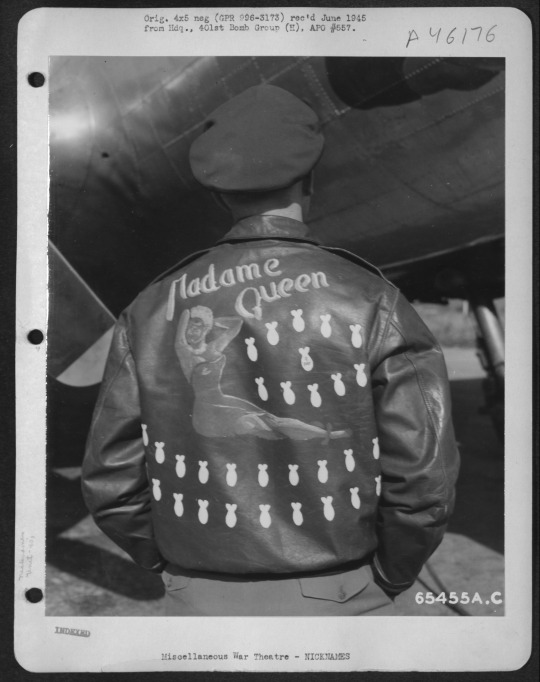
Nose art, the decorative painting or design on the fuselage of military aircraft, has a storied history that peaked during World War II. This vibrant, often cheeky artwork served as a morale booster for the crew, adding a personal touch to the grimness of war and providing a sentimental tie to the home they were fighting to protect. The practice traces its origins to Italian and German pilots in World War I, but it was during World War II that American airmen embraced this form of expression with unparalleled creativity.


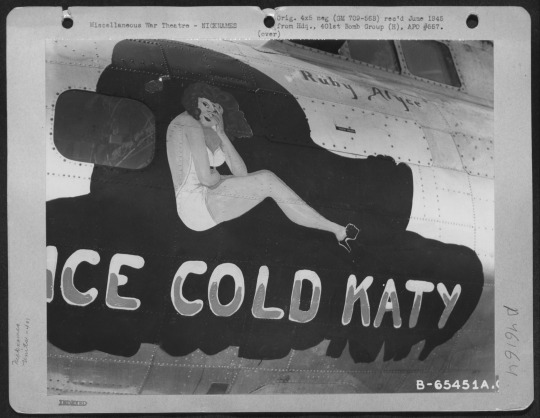

World War II represented the golden age of nose art, with American crews stationed in Europe and the Pacific leading in creativity. Artworks ranged from ferocious animals and cartoon characters to pin-up girls and patriotic symbols, each with a unique name that reflected the aircraft's character, the crew's aspirations, or an inside joke among the squadron. Names like "Memphis Belle," "Enola Gay," and "Sack Time" became as legendary as the aircraft themselves, symbolizing the spirit of the crew and their mission.




Nose art was crucial to boosting morale among crew members, providing a sense of individuality and ownership over their aircraft in an otherwise regimented and dehumanizing environment. This artwork fostered an emotional attachment to their planes, with each piece a vivid manifestation of the crew's bond. It represented a piece of home and personality in foreign skies, a reminder of what they fought for and the camaraderie that sustained them.


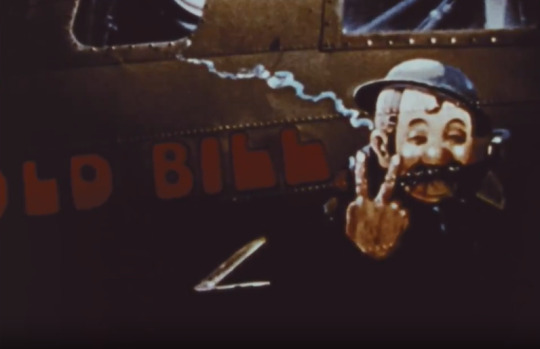
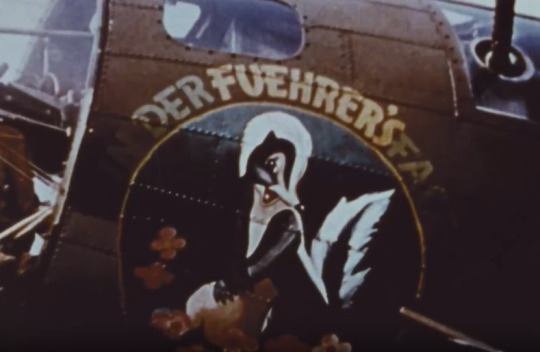

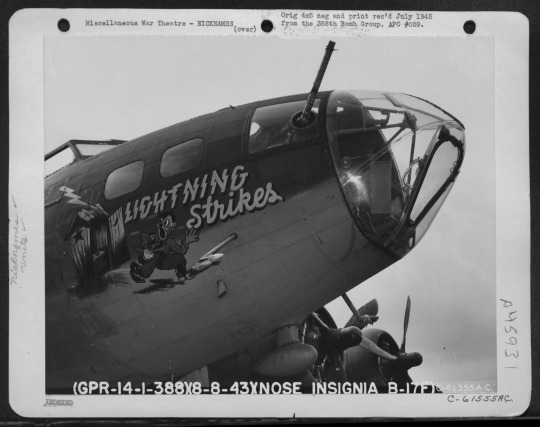

The subject matter of nose art varied widely, reflecting diverse personalities within the crews. Cartoons and comic characters like Donald Duck and Bugs Bunny were favorites for their humor and relatability. Artwork also featured fierce sharks, tigers, and eagles, symbolizing the aircraft and crew's power and aggression.
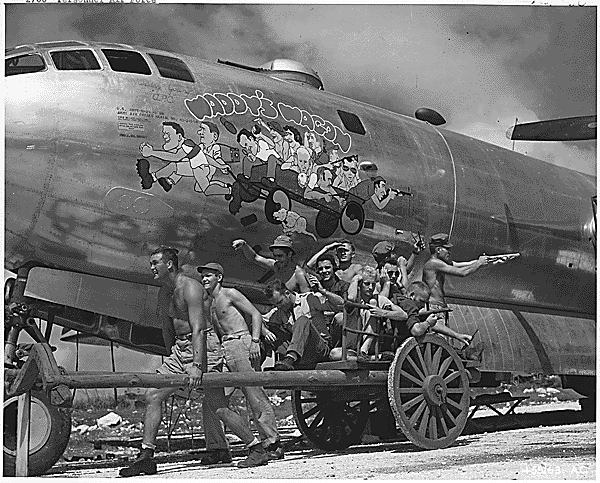

Many nose art pieces were painted by the crew members themselves, though some squads had designated artists. Individuals like Don Allen, who painted nearly 100 pieces of nose art, were celebrated for their contributions. Using whatever materials were at hand, these artists created masterpieces under challenging conditions, showcasing remarkable ingenuity and talent.

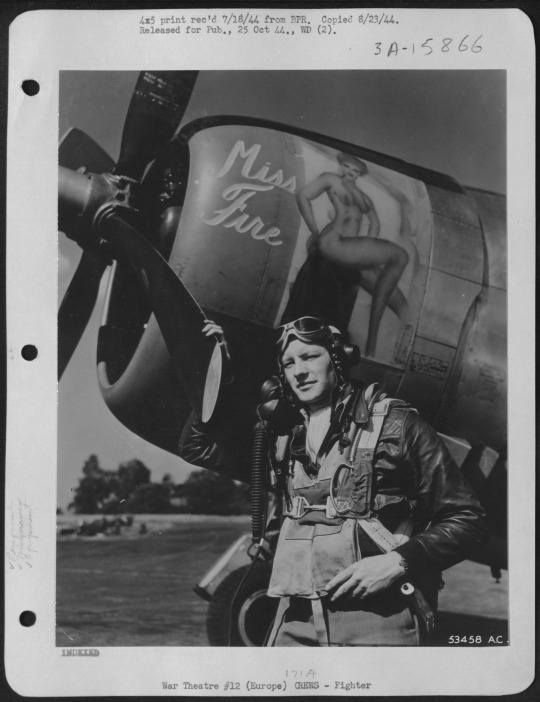
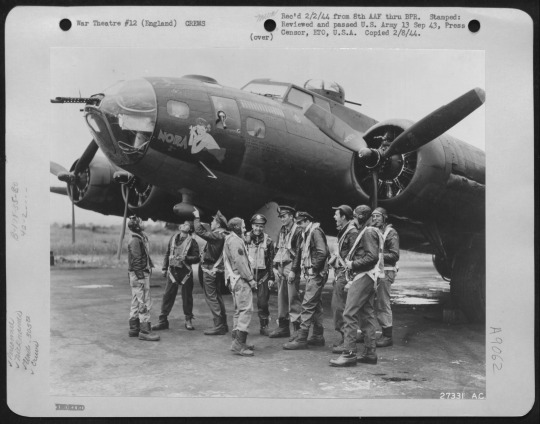
The practice of nose art declined after World War II, largely due to stricter military regulations and the evolving nature of warfare. However, its legacy endures, captivating historians, veterans, and enthusiasts. World War II nose art remains a powerful reminder of the human element amidst war's machinery, a colorful testament to the resilience, creativity, and spirit of those who served.
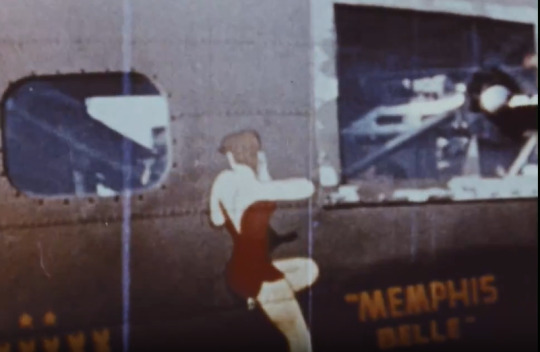




The National Archives holds a treasure trove of photographs featuring this iconic nose art, often discovered in ordinary crew photos where the art itself isn't the primary focus of the image. This creates a fascinating treasure hunt for enthusiasts and researchers alike, offering glimpses into the past where this artwork accompanies stories of bravery, camaraderie, and the personal touches that made these aircraft more than just machines of war.
More resources on the National Archives website and Catalog:
https://nara.getarchive.net/topics/nose+art
https://www.archives.gov/research/military/ww2/photos
396 notes
·
View notes
Text
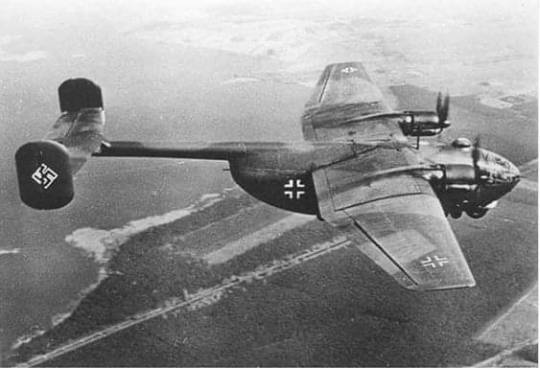
Arado Ar 232A Tausendfüßler (Millipede). Fantastic, ground breaking transport aircraft that pioneered many standard features found today. For more, see my Facebook group - Eagles Of The Reich
20 notes
·
View notes
Text

Focke-Wulf Fw 200C Condor
Eric Winkle Brown's Lost Rare Interviews, Tape 2
#youtube#aircraft#airplane#aviation#dronescapes#military#ww2#wwii#documentary#aviation history#Fock-Wulf#focke wulf#Fw200#Focke Wulf Condor#aviation lovers#aviation photography#aviation industry#german air#wwii airplane#wwii germany#wwii era#wwii history
185 notes
·
View notes
Text

German Stuka Dive Bombers photographed over Yugoslavia, in October 1943
82 notes
·
View notes
Text




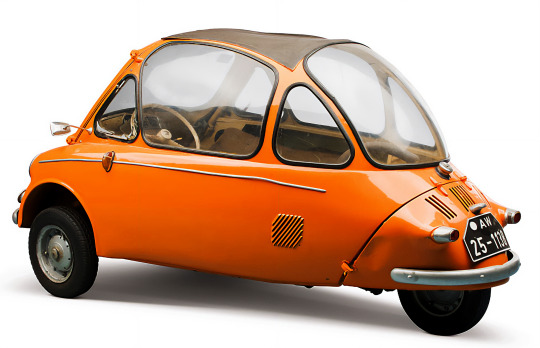
Heinkel Kabine 150, 1956. Ernst Heinkel was a German aircraft engineer who, like Messerschmitt and BMW (who made aero engines) where prevented from making aeroplanes after WW2. Inspired by the Iso Isetta , Heinkel set about making a microcar that would out perform its rivals. His version had a lighter, full monocoque shell and a single cylinder, 4 stroke engine. It was made in German until 1958 when production was transferred to Ireland where it built under license. Poor quality control meant the license was withdrawn and in 1960 production was restarted by Trojan Cars in the UK where it remained in production (as the Trojan 200) until 1966
#Heinkel#Heinkel Kabine 150#microcar#3 wheeler#single cylinder#front opening#dead brands#1956#1950s#rear engine
681 notes
·
View notes
Text
Re: Pervertin or how German Supersoldiers High on Crack travelled through Space and Time Buy my Book

I came across a post on the bird site yesterday calling into attention the use of pervitin, more or less adderall, among German troops during WW2. For context pervitin tablets were indeed issued to a lot of military personnel back in those days, specifically to aircraft pilot and sometimes tank crews on long missions. The drug as some of you may have heard keeps you awake and alert, along with a slew of side effects and a non negligible chance of addiction.
In a discussion that brought to view just how willing people are to buy into Nazi propaganda in the year of our f*cking lord 2023, I pointed out a few things, uphill and having to indulge a lot of sidetracking.
The use of pervitin has always been a little overstated ever since it came to the internet's attention, and I certainly would never call it a key component of the Blitzkrieg when, in the theaters of war where actual Blitzkrieg was employed, its success was more due to a combination of innovative doctrines, intact fuel supplies and a big fat helping of dumb luck. It was a bold move highly relying on capturing enemy fuel depots with fast, surprise deep strikes supported by a lot of armored and air forces, and it was only sustainable in neighboring, industrialized countries.
One can argue if the USSR was industrialized at the time, but it stopped mattering when the Russians removed their entire industry from the West to beyond the Ural mountains. The Blitz stalled there.
"But if it didn't work, then why did the Nazis do it so often ?"
Well the answer to that is twofold. The first, longer answer is that Nazis were a bunch of f*cking morons. Maybe not one by one, but as a government in charge of military procurement, they were one bunch of goofy motherf*ckers. Gaggle of functional shit-for-brains really.
The Nazis gave every one of their tanks in the middle of the war two coats of anti-magnetic paint, which took almost a full day to cure, despite being the only major nation to use magnetic antitank mines. The Nazis kept using slave labor drawn from their prisoners of war, including in the manufacturing of their overengineered armored vehicles, resulting in poor quality products or, you know, a few rivets in your magnificent Tiger tank being replaced by a cigarette butt. The Nazis spent more than half the cost of a strategic bomber on every V2 rocket, not including design costs, for less than half the payload. It ended up killing more Germans and slave workers than British people in London, for literally no strategic or tactical result with 0.4 person killed per every rocket.
The second, shorter answer is that pervitin was not used that much. A lot of the arguments trying to boost its importance come from a single book, "Blitzed" by Norman Ohler, now available in twenty languages apparently, where grand claims are made by a historian who was probably more than a little tired of seeing Buzzfeed rack in the big bucks instead of him.
End note; I was called out by a bird siter after the conversation that inspired this post for even beginning to fact-check this, which they considered, and I quote, "fangirling over nazi stats". I cannot stress this enough, learning the 'bad' parts of history does not make you bad person, it is how you interact with the resulting knowledge. Unlike what they implied, I had to look for those supporting evidence. I had a hunch that such a grabbing headline about super-drugs would be fake, I knew offhand that V2 rockets killed more blues than reds, but when I had to research all that jazz about Nazis and their superweapons it was to dunk on them, not make another History Channel documentary about a time-travelling bell.
Stay critical, fascists can eat shit.
736 notes
·
View notes